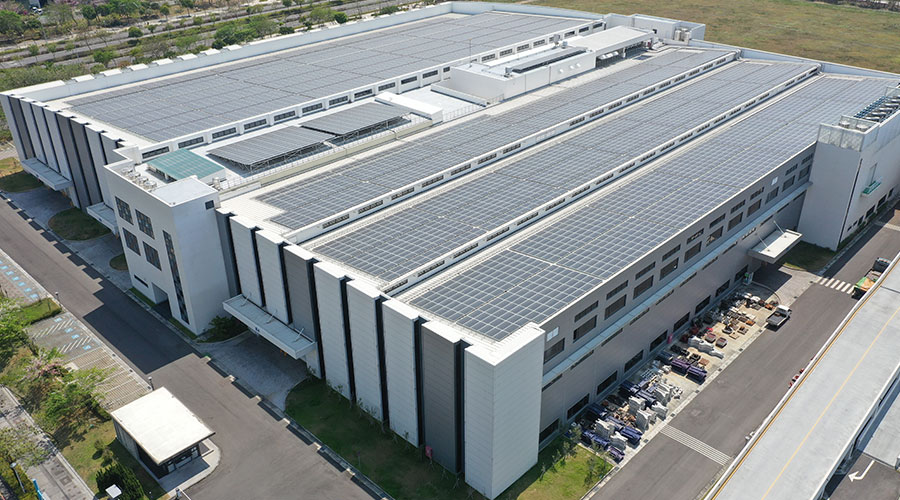5 Steps to Achieving Sustainable Renovations
Collaboration among many disciplines key for building owners to accomplish their energy saving goals.
By Kyle Christiansen, Contributing Writer
There is a growing trend of collaboration among construction disciplines that is leading to sustainable solutions for the construction and renovation challenges of our generation. Everyone I meet — architects, engineers, building envelope consultants, contractors, asset managers/owners, management companies and legislators — is thinking about trends and solutions in renovation and sustainability.
One of the bigger trends in building renovation and sustainability is the collaborative effort among building science consultants, contractors, manufacturers, engineers and architects. These professionals are working together to identify sustainable, cost-effective approaches for meeting today’s renovation and sustainability challenges.
Collaboration among all stakeholders is required. There is no single or simple solution. While certain guiding principles will shape the future of building renovation and sustainability, we also face a complex web of decisions. As we consider how to allocate the trillions of dollars needed simply to renew existing buildings, we must also think about how to integrate world-changing design solutions to turn these buildings into high-performing assets.
Here are five steps required to create a sustainable trend in renovation solutions:
Step one: Asset inventory and renewal cost.
The foundation of the problem is understanding its scope. Many of those managing capital renewal, renovation, adaptive reuse, or disposition decisions face hundreds of facilities clamoring for attention, while others address these issues one building at a time.
The General Services Administration, for example, manages 250,000 buildings in its portfolio. K-12 public school systems are responsible for 170,000 educational facilities, and private schools account for another 40,000. Many school systems nationwide have 100 or more schools. States and municipalities also have hundreds of buildings to manage. Maryland alone manages 1,400 facilities.
Colleges and universities often have centralized or decentralized portfolios of buildings as well. The University of Minnesota, for instance, manages over 600 educational facilities. The average K-12 school is rated D+ for condition and needs an estimated $4.5 million just to bring it up to good condition.
Facility condition assessments (FCA) have become the standard of care for creating capital planning budgets and priorities. Common initial questions should include:
- What do I have?
- Where is it located?
- What is its condition?
- What is its remaining useful life?
- What is its replacement cost?
- How critical is this asset?
An asset inventory provides an understanding of what are typically called “Renewal Costs.” FCA studies of buildings — whether individually or for entire portfolios — usually account only for renewal costs, not for selective improvements.
Step two: Identify legislative requirements to improve energy efficiency and decrease carbon footprint.
Legislation at both state and local levels is increasingly raising the bar from basic renovation or renewal efforts, requiring larger buildings — often 35,000 square feet or more — to address energy efficiency performance as part of their renewal or renovation investments. Building performance standards (BPS) take a self-reporting approach in which building owners must disclose their buildings’ energy and/or emissions efficiency. Owners and portfolio managers in many states and jurisdictions now need to start benchmarking their buildings annually. At first glance, benchmarking appears simple: owners input energy usage data into a Department of Energy software tool to compare their buildings with similarly sized and located facilities.
Studying a building’s energy performance is the easy part. The more challenging aspect is that buildings may need to meet minimum energy efficiency standards set by the International Code Council. Starting in 2030. If a building fails to meet these standards, facilities will incur fines that increase until a retrofit occurs to improve performance. Both the standards and the penalties will rise over time. For example, in Maryland, a new law requires buildings over 35,000 square feet to meet net-zero energy performance by 2025.
In the past 50 years, building codes have changed frequently, but existing buildings were often “grandfathered” under whatever code was in effect at the time of their construction, sparing them from code-mandated upgrades unless structural systems or exit pathways were significantly modified.
In addition to standard renewal costs, climate activists and legislators have added carbon footprint and net-zero emissions goals, effectively doubling the challenge. Many buildings are already long overdue for capital investment. Now they must also meet new energy efficiency expectations.
Before embarking on a renovation or renewal investment, check with local and state legislation to see what the current or forthcoming energy performance requirements are or will be. Collaboration with consultants who are keeping up with these requirements can help make long-term sustainable decisions that will meet the jurisdictional goals and avoid potential fines for non-compliance.
Step three: Establish asset management priorities.
The federal government recently convened a committee to study capital planning for facilities from an asset management perspective. Their first challenge was to define a high-performance building.
“The term ‘high-performance building’ means a building that integrates and optimizes on a life cycle basis all major high-performance attributes, including energy conservation, environment, safety, security, durability, accessibility, cost-benefit, productivity, sustainability, functionality, and operational considerations.”
Their 250-page summary report also addresses these asset management questions:
- What are the benefits of federal infrastructural renewal and repurposing?
- What are the key performance indicators (KPIs) for measuring these benefits?
- What are the costs involved, and how do we determine accurate full life cycle costs?
- How can savings in life cycle costs justify near-term investment in renewal?
- What are the interdependencies of the various factors, and how do they influence each other?
- What alternatives exist to renewing the federally owned infrastructure?
- What is the risk and cost of no investment?
- What are the risks of integrating infrastructure of varying ages or stages of the life cycle?
- How should risks posed by deteriorating facilities — building systems (mechanical, electrical) or components (roofs, foundations) — be measured and managed in terms of mission-critical outcomes (e.g., physical security, operating costs, worker recruitment and retention, healthcare costs)?
- How can the practices for delivering and maintaining facilities that meet mission requirements be implemented in the most cost-effective, energy-efficient, safe, adaptable, and sustainable way?
Setting priorities for asset management and capital investment can be complicated. An Ivy League university recently asked me to define the industry-leading metrics for setting priorities in high-performing asset management. I suggested the following:
- Immediate repairs and study recommendations
- Short-term, near-term, and long-term summary
- Facility Condition Index (FCI) — calculated replacement cost from a verifiable method
- Energy benchmarking and carbon footprint
- Energy retrofit study — mechanical, electrical, and plumbing (MEP), plus building enclosure
- Life safety, building code, and ADA compliance
- Historic significance and age
- Operational history and documentation
- Sustainability and utilities
- Space planning study
It is important to take a multifaceted approach to making capital investment decisions. The metrics outlined above are a good starting point to organize and communicate priorities. Collaboration requires the integration of these competing goals and metrics to set and obtain achievable goals that meet an organization’s mission.
Step four: Investigate opportunities to create high-performance buildings.
As a building envelope consultant, I’ve recently had conversations with leaders at major universities, large construction companies, and national architecture firms. I’ve also attended building envelope and facility management conferences. I initiated an ASTM committee to standardize a universal approach to facility asset inventory and capital planning reporting, aiming to improve the reliability of the data we collect on our facilities. In all these discussions, the conversation invariably shifts to building envelope solutions for enhanced energy performance. Many MEP and HVAC solutions have already been explored. The next generation of energy improvements often involves changes and upgrades to the building envelope.
Such envelope solutions are likely to be building-specific and collaborative, because each facility poses unique challenges and opportunities. Historic buildings, for example, rarely lend themselves to significant energy-efficiency retrofits. Structures built in different decades also come with distinct hurdles based on the materials, techniques, and codes used at the time. Air barriers, now considered the first line of defense for comfort and efficiency, can introduce moisture management problems into older walls and facades if not carefully designed and installed. Even though air barriers have been studied since the 1930s, their use must be tailored to modern building science and local conditions.
The building envelope plays a pivotal role in both energy performance and long-term durability. Air barriers are a cornerstone of well-performing envelopes, especially in cold climates, and can help facilities with preventing heat loss, moisture control, improved comfort and enhanced durability to extend a building’s service life.
Working in collaboration with HVAC and building envelope consultants can help to ensure that building science solutions are maximized. Working with the owner, contractors, and manufacturers can help to stage the implementation of these solutions to manage costs. Sometimes, spreading the projects out and sometimes consolidating projects can help to maximize the limited capital that needs to be employed.
Step five: Prioritizing collaboration is the key to “eating the elephant” one bite at a time.
I recently reviewed a 1930s high-rise multifamily building that urgently requires renewal. It was built without modern insulation, air barriers, vapor barriers, or moisture drainage planning, and it suffers from thermal bridging between the interior and exterior. Although multiple condition reports (2018, 2019, 2022) have been completed, the high estimated costs — even without factoring in energy performance improvements — have put the owner/management company on its heels.
In order to “eat the elephant,” the solution appears to be a measured, staged approach. This involves collaboration among multiple disciplines — MEP, architectural, structural, and building envelope consultants — as well as window supply and installation experts to determine the best strategies for addressing core issues without overwhelming the budget. In Maryland and Washington, D.C., new building performance standards require larger buildings to meet carbon emission targets by 2030 and net-zero standards by 2040. These ambitious requirements place a heavy financial load on building owners, potentially stalling investments in renewal. Some may even opt to pay the penalties rather than undertake expensive retrofits, given how long it might take to see a financial payback.
In many respects, the concept of high-performing buildings, from an energy perspective, has existed only since the energy crisis of the 1970s. A gradual rollout of new codes and legislation over the last 50 years has led us to today’s building science approach.
The most significant trends driving collaboration among stakeholders for building renovation and sustainability include:
- New construction. Designing new buildings to meet net-zero energy performance goals by 2040.
- Renovation. Roughly half of existing buildings are 50-60 years old and now prime candidates for significant HVAC and building envelope upgrades.
- Adaptive Reuse. Older buildings that have outlived their original functions can be repurposed. From a carbon footprint perspective, restoring existing structures is often more beneficial than new construction.
- Energy Management Systems. Advances in management software now allow energy systems to be monitored or self-managed with a high level of data-driven insights, handling thousands of data points rather than just a few.
Again, the biggest trend in building renovation and sustainability is collaboration across all parts of the building and construction industry, anchored by 21st-century building science. Moving too quickly toward a “solution” without careful study can lead to new problems that will burden future generations. It is essential to pursue solutions that respect modern building science. Another emerging theme is the demand for — and appetite for — asset management strategies informed by comprehensive facility condition assessments. A thorough understanding of each facility’s systems helps owners and managers prioritize budgets more reliably.
In 2024, I argued for a national ASTM standard outlining how facility condition assessments should be conducted. An ASTM FCA committee was formed in late 2024 and is currently meeting monthly to set the standard of care that will guide the next generation of building priorities, budgets, and renewal decisions. Establishing uniform expectations for collecting and organizing facility data is the first step in creating high-performance and sustainable buildings. The current trend is clear: cross-disciplinary collaboration to develop effective, sustainable solutions.
Kyle Christiansen is the director of facility consultation with BPL Enclosure.
Related Topics:












